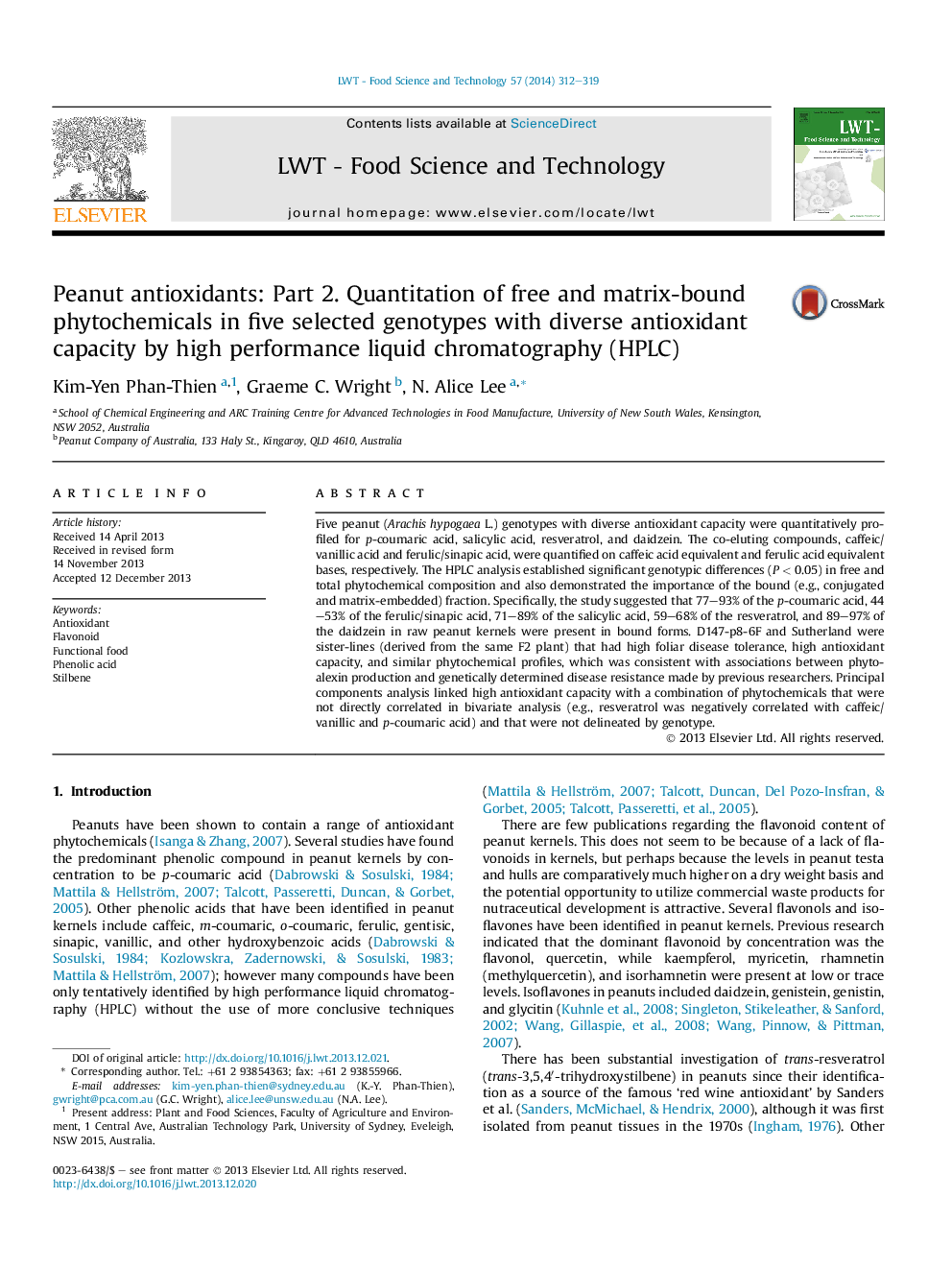| Article ID | Journal | Published Year | Pages | File Type |
|---|---|---|---|---|
| 6403788 | LWT - Food Science and Technology | 2014 | 8 Pages |
â¢5 Peanut genotypes with diverse antioxidant capacity were profiled for key antioxidant phytochemicals by HPLC-PDA.â¢Several phenolic acids, resveratrol, and daidzein were quantitatively measured.â¢Free and bound fractions were estimated in native and enzyme-treated extracts.â¢Genotypic patterns in phytochemical composition were examined.â¢Antioxidant capacity was correlated with a combination of phytochemicals.
Five peanut (Arachis hypogaea L.) genotypes with diverse antioxidant capacity were quantitatively profiled for p-coumaric acid, salicylic acid, resveratrol, and daidzein. The co-eluting compounds, caffeic/vanillic acid and ferulic/sinapic acid, were quantified on caffeic acid equivalent and ferulic acid equivalent bases, respectively. The HPLC analysis established significant genotypic differences (PÂ <Â 0.05) in free and total phytochemical composition and also demonstrated the importance of the bound (e.g., conjugated and matrix-embedded) fraction. Specifically, the study suggested that 77-93% of the p-coumaric acid, 44-53% of the ferulic/sinapic acid, 71-89% of the salicylic acid, 59-68% of the resveratrol, and 89-97% of the daidzein in raw peanut kernels were present in bound forms. D147-p8-6F and Sutherland were sister-lines (derived from the same F2 plant) that had high foliar disease tolerance, high antioxidant capacity, and similar phytochemical profiles, which was consistent with associations between phytoalexin production and genetically determined disease resistance made by previous researchers. Principal components analysis linked high antioxidant capacity with a combination of phytochemicals that were not directly correlated in bivariate analysis (e.g., resveratrol was negatively correlated with caffeic/vanillic and p-coumaric acid) and that were not delineated by genotype.
